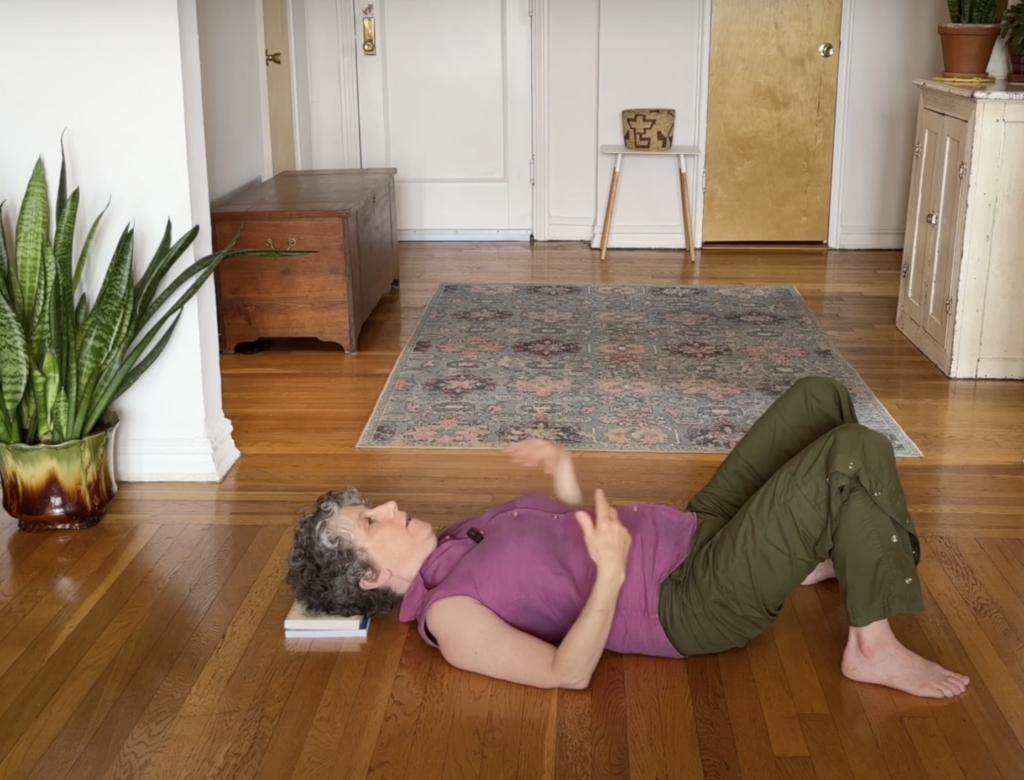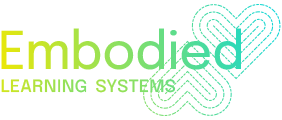
A somatic approach to Alexander Technique Constructive Rest
Constructive rest is a deceptively simple, transformative embodiment practice. It was invented and adapted by generations of Alexander Technique teachers who want their students to practice on their own.
The first generation of teachers trained by F.M. Alexander (from 1931 – 1955) developed “lying down work” to help people get the most out of their lessons, or at least that’s the story I have both read and been told.
I’ve been teaching this practice for 20 years, and I have found it to be more challenging for folks than I first thought. Especially in my group classes, I started to notice that when people focus on their bodies or their breath, it doesn’t always make things more fluid and expansive.
Sometimes, especially if you practice constructive rest (or any movement practice, actually) more regularly, the more you do it, the “better” you get at it…the less pleasurable it gets! Why is that?
There has to be some missing skill, some way of keeping the work fresh and alive. Things really shouldn’t get worse with practice! I think it has to do with how you use your attention.
I wanted to address these challenges with a short video series to help my students get more out of their practice time. Over the years I’ve discovered many different aspects of what we call “attention” or awareness. I’ve broken these attention skills down step by step. I think it makes constructive rest, and any regular practice, much more effective.
This blog post is the third in a series that guides you through these fundamental awareness skills for joyful bodily experience.
In this weeks installment, I combine the first two skills together:
- Whole body awareness: direction sending in constructive rest
- Fluid attention vs. fixed attention: in stillness and motion
And add a third element: awareness of the involuntary movement of breathing. Here are the steps I go through in the video.
1: Set yourself up on the floor
Grab something to support your head. Make sure there is enough space to extend your arms and legs easily. Take a moment to get comfortable on your back.
2: Use fluid attention to wake up your body schema
Start by bringing your attention to different parts of your body that I name, one by one, while maintaining a fluid and mobile focus. Begin at the bottom of your spine, allowing your attention to flow up to include your head. Get curious about the quality of the relationship between these two parts of you.
3: Let the feeling of breathing appear in the background
Invite an awareness of breathing to appear in the background, wherever you can feel it in yourself.
Gradually expand your attention to include your head and your whole torso, letting your attention travel easily between the breathing motion in the background and the parts of your torso we call spine, shoulder girdle, ribs, belly, pelvis.
4: Complete your awareness journey through your whole body
Finally, continue to let breath motion arise in the background of your awareness as you become aware of legs and feet, arms and hands.
Remember, it’s perfectly okay to move your body if needed for comfort.
Find a focal point in the room and let your attention rest there, while simultaneously maintaining awareness of your whole body all at once, and breathing.
5: Follow your breathing cycle while direction sending
Simultaneously, your awareness is traveling through all the parts of your body in sequence as I guide you. You can be alive to your spine, head, torso, legs, and arms, and sense your inhale and exhale at the same time.
Be with each breath as it comes and goes. This ongoing cycle of movement is both voluntary and involuntary. It would happen whether you paid attention to it or not, so it’s ok if your attention wanders.
6: Reflection
As you conclude this session of constructive rest, fluid attention, and awareness of breathing, take a moment to appreciate how you feel at this moment. This experience was a result of a specific methodology, practice, and flow of attention.
You can expect variations in your experience each time you engage in this practice, preventing it from becoming a repetitive experience.
In the next video, I will move on to applying “direction sending” to voluntary movement. The relationship between these two things, however, can be very free and untethered. This way, your “naming of parts” doesn’t become a fixed posture or shape.
Instead, it can become a dynamic, lively experience that doesn’t reiterate old habits of fixed attention or muscular tension in your body.
